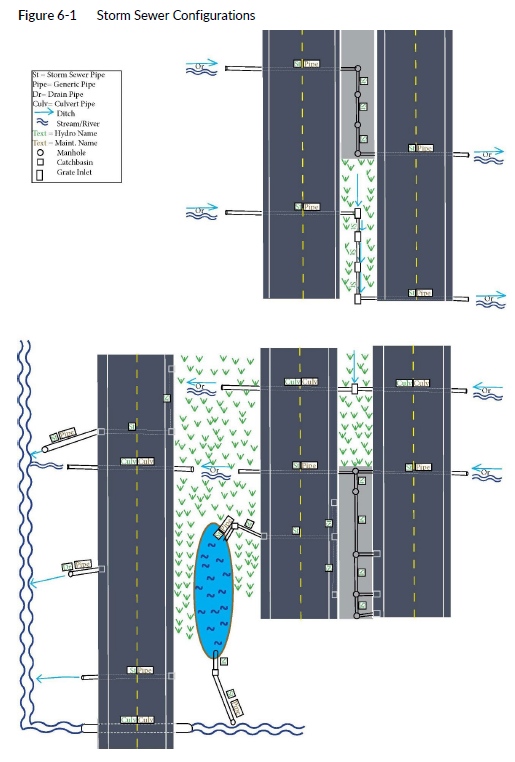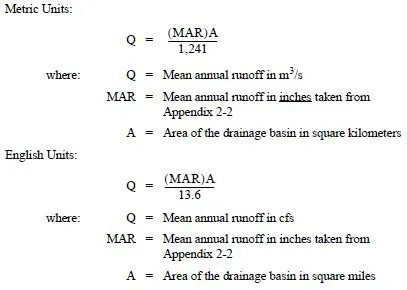A storm sewer is a pipe network that conveys surface drainage from a surface inlet or through a manhole to an outlet location. This chapter discusses the criteria for designing storm sewers (Section 6-2); the data and process required to document the design (Section 6-3); methods, tools, and concepts to help develop designs (Section 6-4 through Section 6-6); and pipe materials used for storm sewers (Section 6-8). It also includes a discussion of drywells (Section 6-7) and subsurface drainage (Section 6-9).
Storm sewers are generally defined as closed-pipe networks connecting two or more inlets; see Figure 6-1. Typical storm sewer networks consist of laterals that discharge into a trunk line. The trunk line then receives the discharge and conveys it to an outlet location. For clarification on the difference between storm sewer and culvert configurations see Figure 6-1. See Section 8-2.4 for pipe testing requirements.
All storm sewer design shall be based on the design criteria outlined in Section 6-2, which includes limits for runoff rates, pipe flow capacity, hydraulic grade line (HGL), soil characteristics, pipe strength, potential construction problems, and potential runoff treatment issues. Runoff is calculated using the Rational Method or the SBUH Method; see Chapter 1 and Chapter 2 for further discussion. Based on the runoff rate, the pipe velocity is calculated using Manning’s equation, which relates the pipe capacity to the pipe diameter, slope, and roughness. The preference is to have the HGL below the pipe crown. After sizing the pipe, verify that the HGL is below all rim elevations. A storm sewer design may be performed by hand calculations, as described in Section 6-4, or by computer program, as described in Section 6-5.
All storm sewer design shall consider climate resilience when determining required pipe sizes for flow conveyance; these factors include the following:
• Storm surges
• 24-hour peak precipitation (100-year event)
• Tidally influenced zones
• Sea level rise
• FEMA special flood hazard areas (SFHAs)
• Section 7-4.5.5 of WSDOT Hydraulics Manual
• Wildfires
• Landslides
• Sediment transportation
• Chronic events
• Population migration
• Future land use changes
• Heat waves
Additional guidance on pipe sizing with respect to climate resilience will be provided in future revisions to the Hydraulics Manual.

